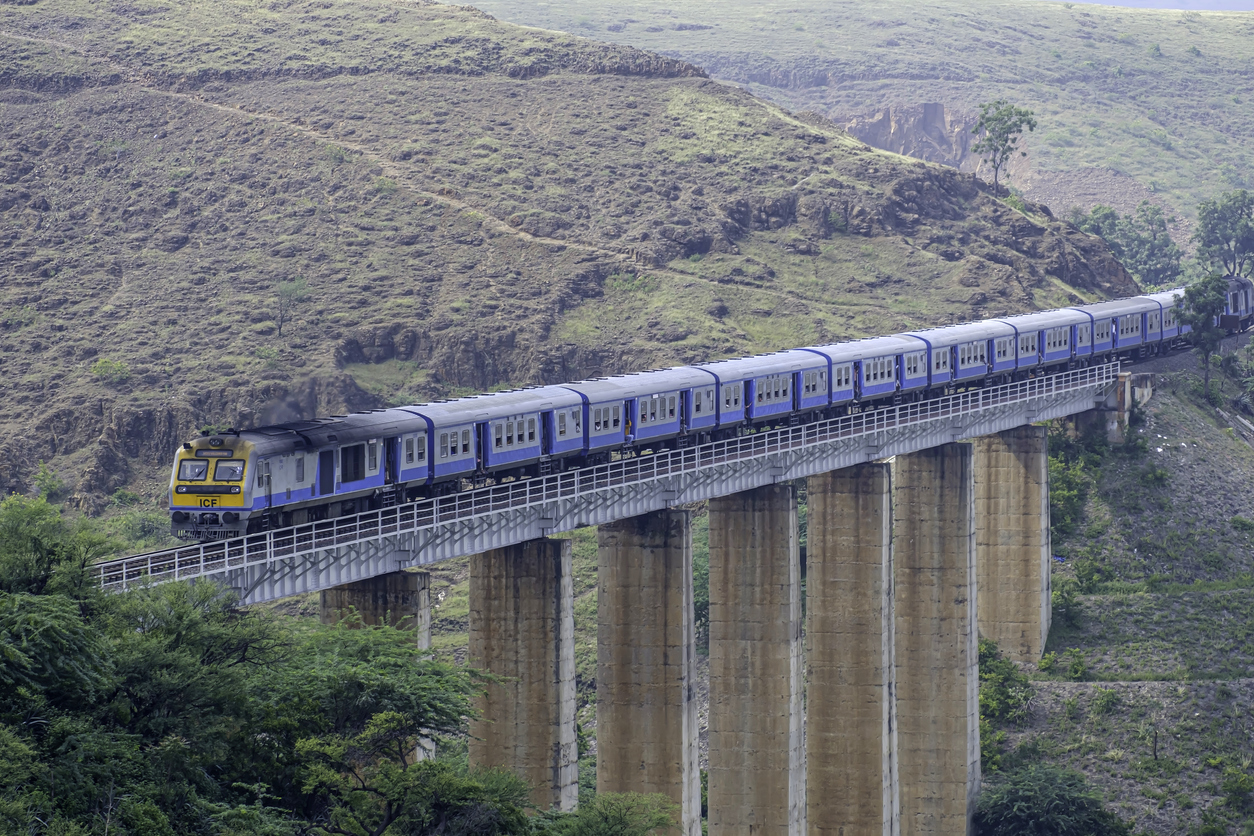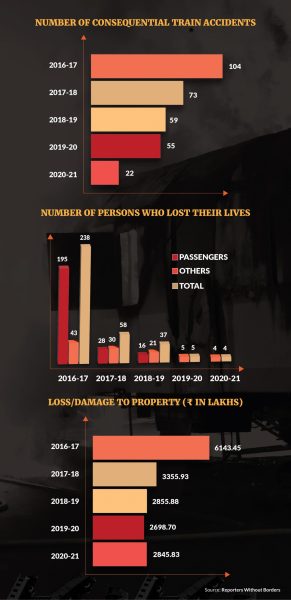
Train accidents have come down sharply in 5 years: Railway data
This comes as good news at a time the Railways has successfully completed trials of Kavach, an indigenously developed safety system

Indian Railways, which helps crores of Indians travel from one part of the country to another each year, has substantially improved its safety record over the past half decade.
The number of train accidents in the country has shown an appreciable decline in the last five years, government data reveal. From 104 “consequential train accidents” in 2016-17, the number has come down to 22 in 2020-21, Railway Minister Ashwini Vaishnaw informed the Lok Sabha while answering an unstarred question from BJP MP from Bihar, Pradeep Kumar Singh.
Also read: Land erosion has impacted one-third of India’s coastline in 3 decades: Govt data
In fact, for two consecutive years, from 2019-20 to 2020-21, no loss of life was reported, the data reveal. While 2020-21, the pandemic year, saw several weeks of total lockdown and restricted travel for months after that, the 2019-20 figures surely reflect a better railway safety record. In contrast, in 2016-17, 195 people had lost their lives in train accidents.

The financial loss to the Railways has also come down by nearly Rs 33 crore over the five-year period, from Rs 61 lakh in 2016-17 to Rs 28 lakh in 2020-21.
For the Indian Railways, these figures come as encouraging news at a time when it is going ahead with the commissioning of an indigenous electronic safety system, called Kavach, designed to help it achieve ‘zero accidents’.
Measures taken
“Safety is accorded the highest priority by Indian Railways and all possible steps are undertaken on a continuous basis to prevent accidents and to enhance safety,” said Vaishnaw in his response to the Lok Sabha question. “The steps taken to check accidents include timely replacement of overaged assets, adoption of modern technologies for upgradation and maintenance of track, rolling stock, signalling and interlocking systems, safety drives, greater emphasis on training of officials and inspections at regular intervals to monitor and educate staff for observance of safe practices.”
Also read: Delhi airport 2nd busiest in March, jumps 21 places to displace Dubai
“Safety devices/systems being used to prevent accidents include complete track circuiting, provision of Block Proving Axle Counters (BPAC), Auxiliary Warning System (AWS), Colour Light LED Signals, Vigilance Control Device (VCD), usage of 60kg rails and Pre-stressed Concrete Sleepers, long rail better welding technology and accelerated induction of Linke Hofmann Busch (LHB) Coaches,” he added.
Focus on Kavach
According to the Railway Ministry, 96 per cent of rail traffic is carried on the Indian Railways High Density Network and Highly Used Network routes. To ensure the safety of this rail traffic, the national transporter is taking up the Kavach system project in a focussed manner. Around 2,000 km will be brought under Kavach for safety and capacity augmentation in 2022-23 as a part of Atmanirbhar Bharat, the ministry said.
Kavach is a system of Safety Integrity Level 4 standards, developed by the Research Design and Standards Organisation (RDSO) in collaboration with the domestic industry as well as trials facilitated by the South Central Railway zone.
Successful trials
Vaishnaw informed the Lok Sabha that the Railways successfully conducted trials of Kavach on a 250 km section of South Central Railway. Kavach, he added, has been commissioned on 1,098 km and 70 locos by South Central Railway.
By 2024, he said, the safety system will be implemented on 3,009 km on the Delhi-Mumbai and Delhi-Howrah corridors, covering Northern, North Central, East Central, Eastern, West Central and Western Railway.
Also read: Railways failed to improve speed/timings despite spending crores: CAG report
According to the national transporter, the system will seek to prevent trains from bypassing the signal at Danger (Red) and avoiding collision. Kavach automatically activates the train braking system if the driver fails to control it as per the speed restrictions. Besides, it prevents collision between two locomotives equipped with a functional Kavach system.
According to Indian Railways, it is one of the cheapest certified technologies with the probability of error being one in 10,000 years. Also, it opens avenues of export of this state-of-the-art technology.


